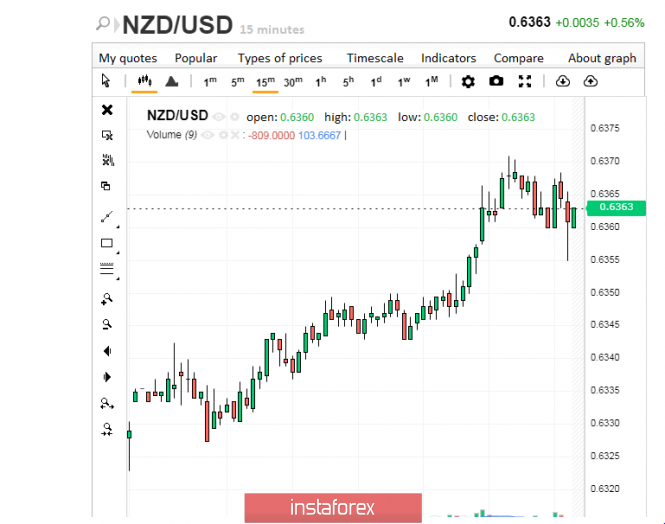
The New Zealand currency is currently not in the best shape, analysts said. The threat of a serious fall hangs over it with the sword of Damocles. The general state of New Zealand's economy is also far from ideal.
Analysts consider the reasons for the possible drawdown of the NZD/USD pair to be a general slowdown in the global economy and continuing uncertainty in US-China trade relations. These factors create the prerequisites for the Reserve Bank of New Zealand (RBNZ) to reduce the interest rate to 64%. If the regulator leaves the rate unchanged, its forecasts will still be pessimistic. This will be the first step towards easing monetary policy in early 2020.
Recall that in August 2019, the RBNZ reduced the rate immediately by 50 basis points (bp), to 1.00%. The regulator explained its decision by the aggravation of the trade conflict between the United States and China, as well as the loss of momentum in the New Zealand economy. The authorities of New Zealand believe that increasing uncertainty and a decline in international trade will reduce the export of goods and services, as well as contribute to a decrease in economic growth in the trading countries of the island nation. The RBNZ management records a low wage growth in the country and a reduction in inflation expectations.
According to analysts, the regulator is currently leaning towards further easing of monetary policy. It is expected that during the upcoming meeting, the interest rate will be reduced by 0.25%, to 0.75%. Experts consider this a negative factor for the New Zealand dollar.
Analysts attribute the negative drivers of the potential kiwi collapse to an increase in unemployment to 4.2% recorded in the third quarter of 2019, as well as a decrease in expectations about the conclusion of the "first phase" of a trade agreement between Washington and Beijing.
Recall that China is a leading trade and economic partner of New Zealand and a buyer of raw materials and agricultural products of the country. The slowdown in the Chinese economy has an extremely negative impact on New Zealand's economic growth, experts emphasize. The worsening macroeconomic indicators of China strongly hits similar indicators of the New Zealand economy. As a result, the New Zealand economy suffers both from a slowdown in the global economy and from a decrease in the volume of purchases of national products, including from China.
A key place in the economy of New Zealand is occupied by timber and agricultural complexes, and the lion's share of exports is made up of dairy products, primarily milk powder. Rising global prices for dairy products provides additional support for the New Zealand currency, experts emphasize. However, negative factors can outweigh the positive effect.
The authorities of New Zealand are certain that in order to stabilize the national economy and increase inflation, the New Zealand dollar should be weakened. Analysts believe that the RBNZ will lower the rate and confirm its commitment to pursue a soft monetary policy. This will increase pressure on the Kiwi, analysts warn.
In early November, the New Zealand dollar and the NZD/USD pair resumed their decline, remaining within the global downward trend. On Monday, November 11, the NZD/USD pair rose to a short-term resistance level of 0.6372. Subsequently, the pair cruised near the levels of 0.6362–0.6363.

According to experts, in the event that the NZD/USD pair sharply drops below the resistance level of 0.6525, it should be in short positions. A breakdown of the local support level of 0.6322 may be considered a signal to resume sales of the NZD/USD pair.
At a certain point, the pair rose to 0.6367, but did not overcome this bar. The NZD/USD pair showed a downward trend.

At the moment, the pair is trading in the range of 0.6364–0.6365, maintaining a relatively flat position. According to experts, one should not expect further growth from the kiwi and the NZD/USD pair. It is limited by the decrease in the RBNZ interest rate and the regulator's penchant for soft monetary policy.
The material has been provided by InstaForex Company - www.instaforex.com